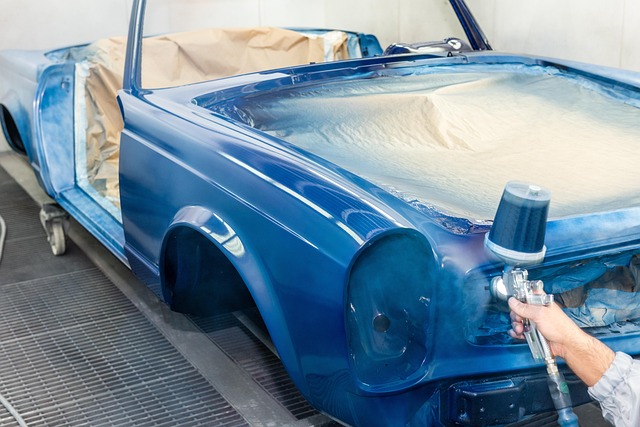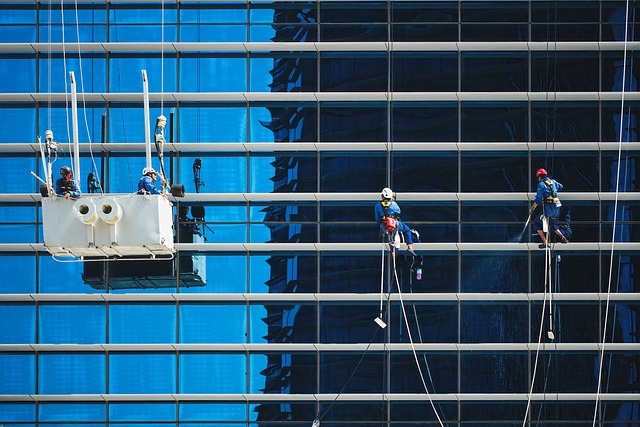Before restoring walls, conduct a thorough assessment to identify damage, including cracks, holes, and dampness signs. Prepare the area by clearing debris, protecting floors with drop cloths, and organizing furniture relocation if needed. For minor issues, use specialized tools for repair; for extensive damage, call Advanced Restoration Services for water damage restoration and mold mitigation. Apply primers and paint to protect walls and enhance aesthetics; choose durable paint for specialized care. Conduct final touches and a quality check to ensure long-lasting, protected walls.
Restoring a damaged wall not only improves aesthetics but also adds value to your space. This comprehensive guide, tailored by advanced restoration services, walks you through the process step-by-step. From assessing and preparing the wall to applying primers and paint, each phase is crucial for achieving a flawless result. Learn how to identify and repair damaged areas effectively, ensuring your wall looks as good as new. Discover expert tips on final touches and conduct a quality check to guarantee long-lasting, satisfying outcomes.
- Assess and Prepare the Wall for Restoration
- Repair and Replace Damaged Areas
- Apply Primers and Paint to Reconstruct
- Final Touches and Quality Check
Assess and Prepare the Wall for Restoration

Before attempting any restoration work, a thorough assessment is crucial to understand the extent of the damage and plan an effective strategy. Start by inspecting the wall for cracks, holes, or areas of peeling paint. Identify if the issue is localized or widespread, as this will impact the restoration process. Check for signs of dampness removal, which can indicate underlying issues like water damage or mold growth—a common problem that often requires specialized advanced restoration services.
Ensure the area is well-ventilated and free from debris to create a safe working environment. If necessary, organize tips to move furniture or clear clutter, especially if remodeling services are part of the scope of work. Prepare the surrounding areas by covering floors with drop cloths to protect them from paint or debris. This step ensures a clean and organized workspace, facilitating a more efficient restoration process.
Repair and Replace Damaged Areas

When repairing a damaged wall, the first step is to assess the extent of the harm. If the damage is confined to small areas, such as holes or cracks caused by wear and tear or minor water damage, advanced restoration services can effectively fix these issues. Professionals skilled in advanced restoration techniques will use specialised tools and materials to repair and replace damaged sections, ensuring a seamless finish that blends with the surrounding wall.
For more extensive damage, including large cracks or areas affected by mould growth, a comprehensive approach is necessary. Water damage restoration experts will not only remove the visible signs of water damage but also address any underlying issues to prevent future problems. Additionally, they can improve indoor air quality by eliminating mould and allergen sources, providing allergy relief for residents.
Apply Primers and Paint to Reconstruct

After repairing the physical damage to a wall, the next step is crucial for a successful restoration: applying primers and paint. This process acts as a shield against future damage, ensuring the wall’s longevity. Start by using an appropriate primer that addresses any specific issues like humidity solutions or discoloration left behind. An expert in advanced restoration services knows how to choose the right primer for different types of walls and conditions.
Once the primer is dry, move on to applying a fresh coat (or coats) of paint. This step not only restores the wall’s aesthetic appeal but also provides an extra layer of protection. Consider the type of paint needed – whether it’s for regular wear and tear or for areas prone to crime scene cleanup in Denver – to ensure durability and a seamless finish.
Final Touches and Quality Check

After completing the repair and replacement process, it’s time to perform the final touches and conduct a thorough quality check. This step is crucial in ensuring that your wall restoration project meets the highest standards. Inspect the area for any loose or uneven patches, and make the necessary adjustments using appropriate fillers or compounds. Once the surface is smooth, apply a thin coat of primer to create an even base for painting.
The final touch involves adding the finishing paint, utilizing colors that complement your space. This is also an opportunity to assess if further Advanced Restoration Services are required, especially if there are signs of moisture intrusion or previous repairs that might need upgrading from fire damage restoration or climate control issues. A meticulous quality check guarantees a wall that not only looks restored but also ensures longevity and protection against future damages.
Restoring a damaged wall is a multi-step process that requires careful assessment, preparation, and execution. By following these steps, from assessing and preparing the wall to applying primers and paint, you can achieve a seamless and restored surface. For more complex or extensive damage, consider enlisting the help of advanced restoration services to ensure top-notch results. With dedication and the right approach, your wall will not only be repaired but also enhanced, revitalizing the entire space.
